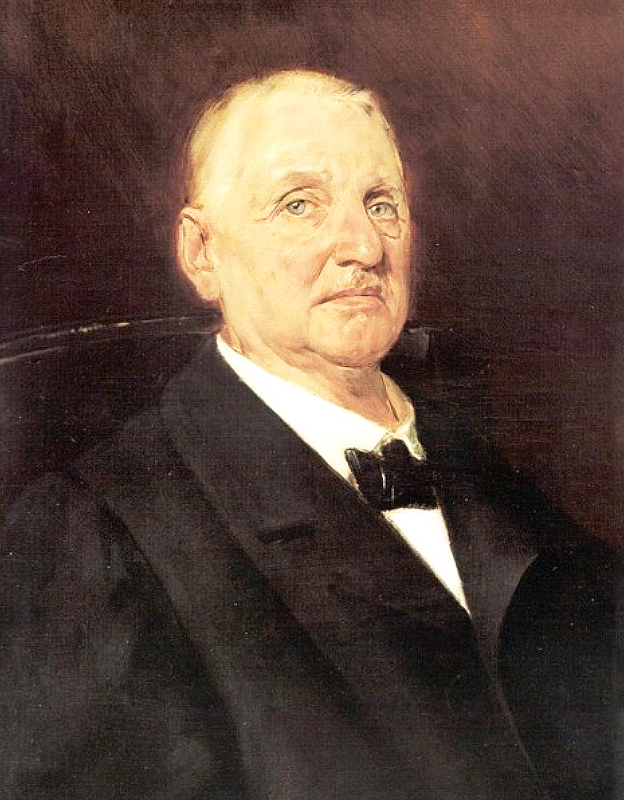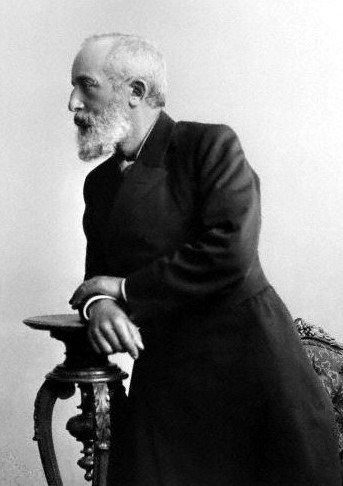
Is it wrong to wish Anton Bruckner had been a little more stubborn?
Certainly it would have simplified the work of identifying the definitive performance scores for his symphonies had he just said “close enough” and moved on. As it stands, his catalog is unique in its number of contrasting editions, reflecting a singular history of attempts to clarify and re-clarify.
The Chicago Symphony Orchestra, under guest conductor Semyon Bychkov, will perform Bruckner’s Symphony No. 8 in concerts April 24-26.
It also will perform the Eighth in an Afterwork Masterworks concert at 6:30 p.m. April 23.
Many explanations by armchair psychologists have been offered regarding his incessant tinkering: susceptibility to well-intentioned but ambitious collaborators, a desire to be embraced by a critical and indifferent public, insecurity due to his late start as a composer (he was 40 when he completed his first large-scale work).
Yet with so many internal and external forces arrayed against him, so much confusion surrounding his work, so many wounds (self-inflicted and otherwise), his compositions remain fixed in the canon. Recorded and re-recorded, revisited, enshrined, cherished. Detours and all, Bruckner still holds his reputation as one of the greatest of symphonists, an innovator whose musical intellect and perpetual search for the transcendent has had a profound impact on generations of listeners.
Regardless of the motivation, he had a mania for revision — to constantly re-engage previously ended debates — a tendency that showed itself as early as 1873 with his second symphony, revised substantially after the premiere at the urging of his champion Johann Herbeck. From that point forward, the door was open, and a dismal trajectory of indifference or rejection from audiences and critics only exacerbated matters.
This is one of the central puzzles presented to us by the composer, as described by musicologist Deryck Cooke in his landmark 1969 article “The Bruckner Problem Simplified”: “By 1903, there were in existence no less than 25 different scores of the nine symphonies,” says Cooke, “moreover, the 10 published ones did not represent Bruckner’s own intentions, whereas the 15 unpublished ones were either authentic or at least nearly so.”
Since Cooke’s article, more scholarship has emerged, and our image of a timid, compliant man eagerly accepting composing tips from all and sundry has largely been demythologized. (Said Dermot Gault in The New Bruckner (2011): “We cannot rely on anything Deryck Cooke … has to say on the subject of Bruckner versions or editions.”) We can’t ignore the many editions, but we may have a greater understanding of the impulses behind them. At the risk of simplification, later historians see the early published versions as Bruckner’s intended statements at the time, and later versions as an advanced phase in the creative process.
But what a creative process.
The Eighth Symphony is a notable exemplar of Bruckner’s impulse to refine. He had just enjoyed the greatest success of his career with the premiere of the Seventh Symphony, a surprise to him late in life, considering the brickbats that had been hurled his way. (Consider that he never heard his Fifth or Sixth symphonies performed in their complete versions.)
In 1887, he delivered the Eighth to his close friend and collaborator Hermann Levi, conductor of the Seventh’s premiere, with great hope and aspiration: “Hallelujah! At long last, the Eighth is finished, and my artistic father must be the first to know. … May it find grace!”
The work did not find grace, however, and in fact, Levi’s response prompted Bruckner to undertake three years of further revisions: “I find it impossible to perform the Eighth in its current form,” said Levi. “I just can’t make it my own! As much as the themes are magnificent and direct, their working-out seems to me dubious; indeed, I consider the orchestration quite impossible. … Don’t lose your courage, take another look at your work, talk it over with your friends, with Schalk, maybe a reworking can achieve something.”
This not only drove Bruckner to overhaul substantial portions of the manuscript and compose new music — a trio for the scherzo — but also propelled him to revisit his first five symphonies.
The response to the revised work was a marked success. Even his most hardened critics begrudgingly noted the frenzied applause, and his ardent supporter Hugo Wolf called it “the creation of a giant, surpassing in spiritual dimension and magnitude all the other symphonies of the master.”
The cost of second-guessing, even correctly, may have been paid later on. Speculation remains that the constant revisions of his early work left Bruckner insufficient time to complete his Ninth Symphony. True or not, in the Eighth, we are left with a work that seems to have crawled over broken glass to arrive in its shattering, luminous glory, and a Ninth forever remaining to be completed — and then further revised.
Peter Lefevre, based in California, writes about classical music for the Orange County Register and Opera News.

